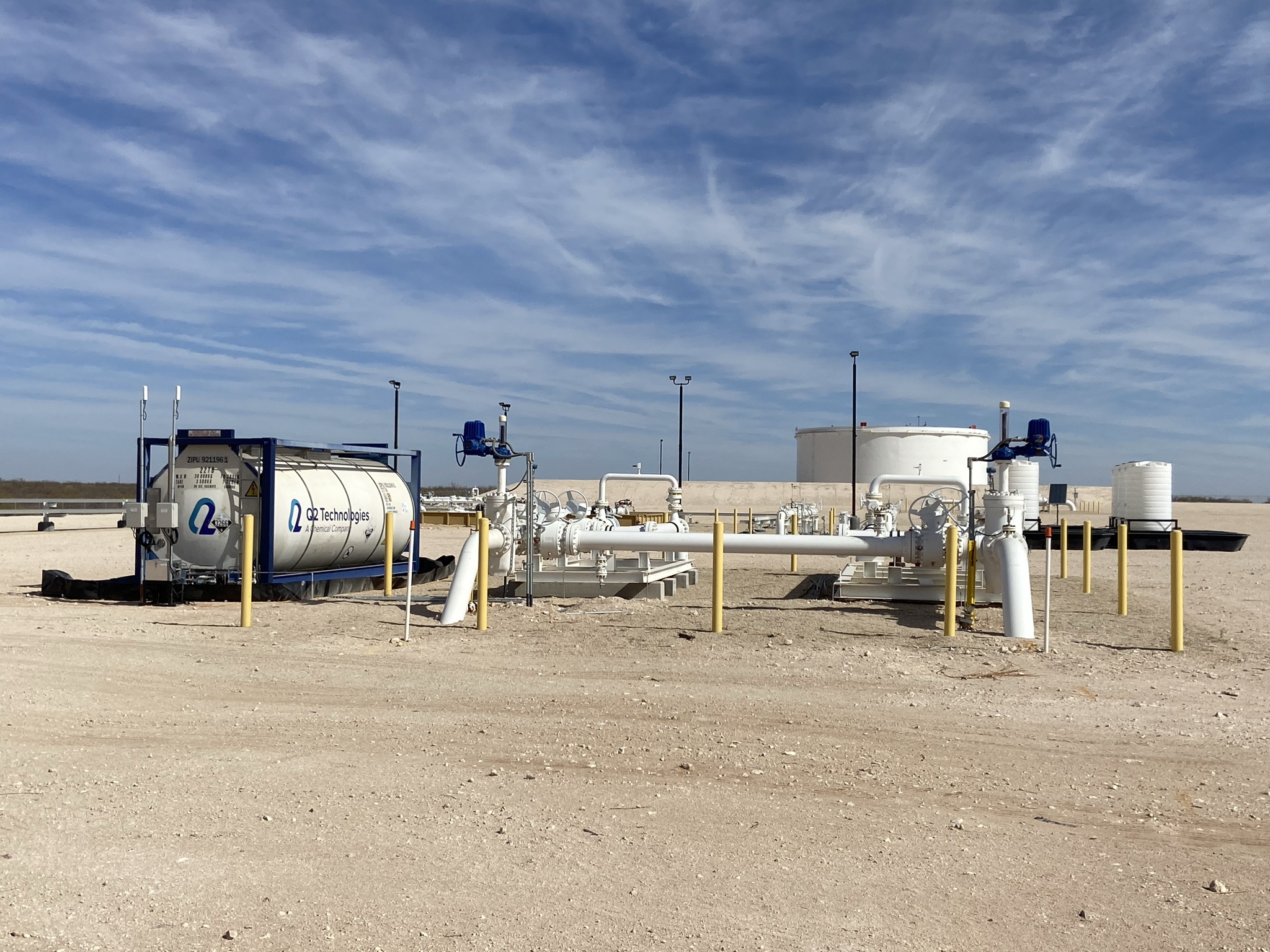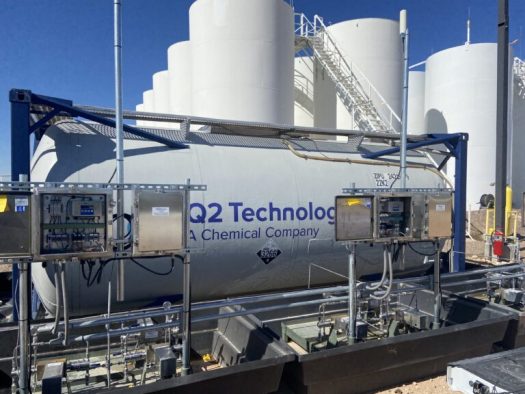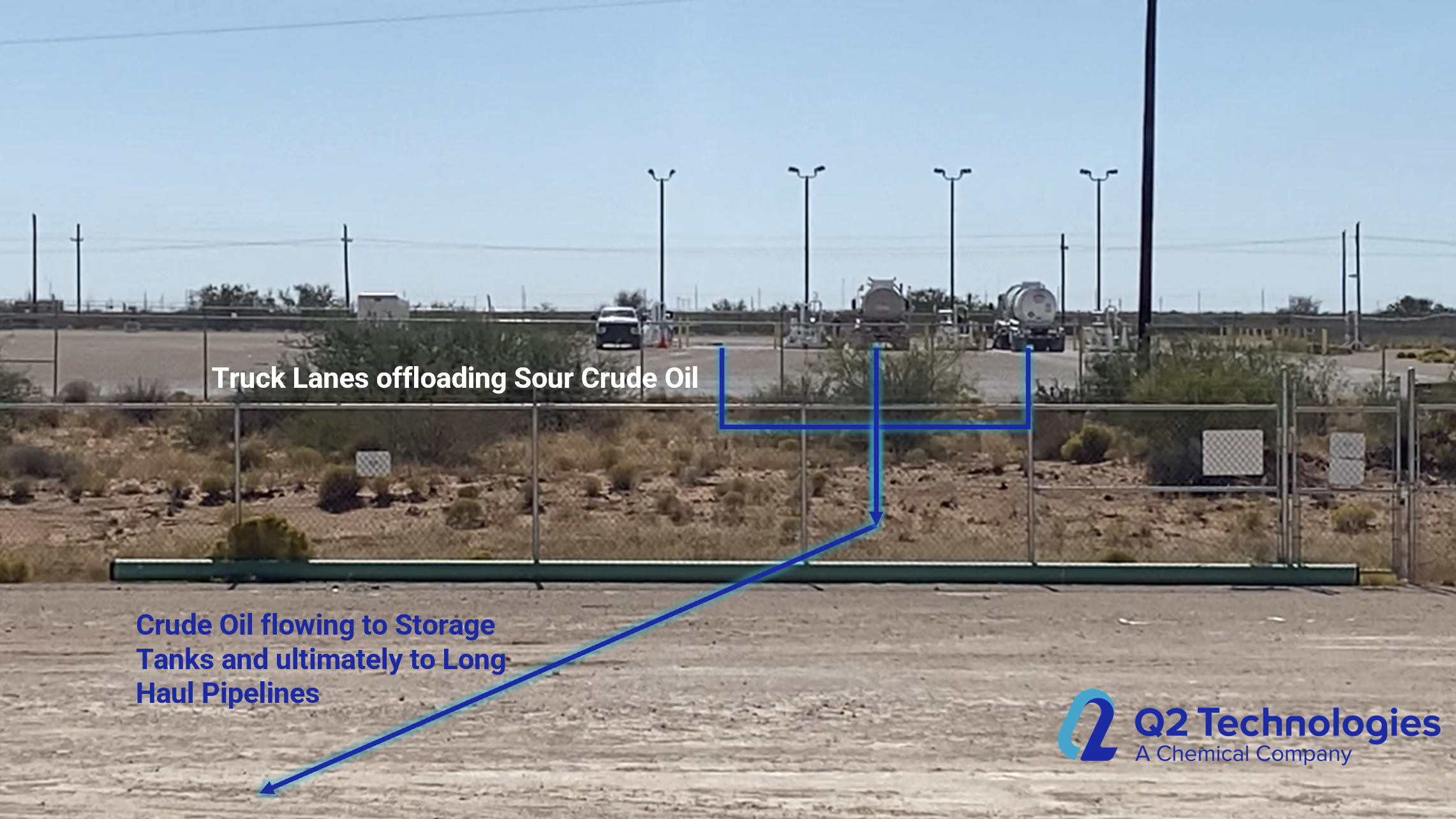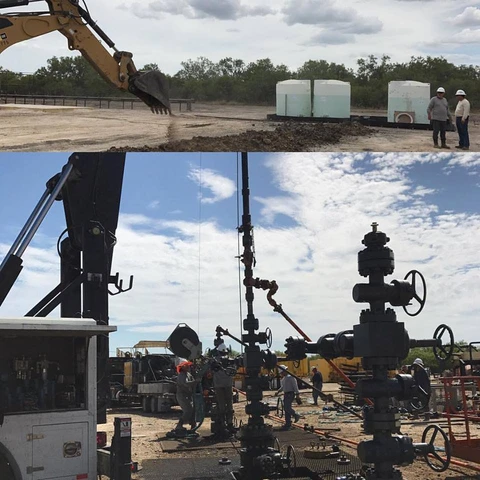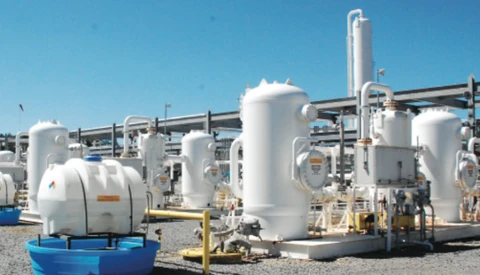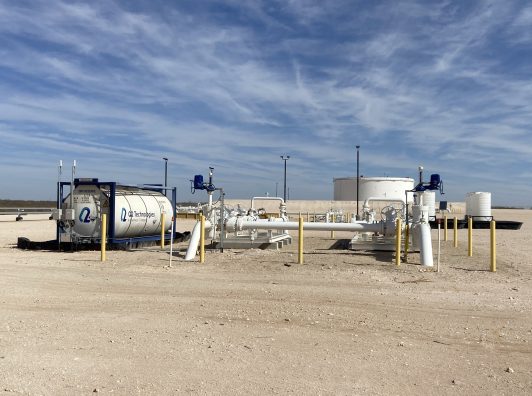
As one of the leading H2S scavenger manufacturers and oilfield chemical suppliers in the industry, Q2 Technologies is committed to delivering high-quality H2S removal solutions to its clients. We understand the importance of removing H2S from natural gas and crude oil, as it is a toxic and corrosive gas that can cause serious damage to pipelines, equipment, and the environment. In this blog post, we will discuss the science of H2S removal and how our oilfield chemical solutions can help.
H2S Scavengers: How they work
H2S scavenger technologies are used to remove hydrogen sulfide (H2S) from natural gas and crude oil streams. There are various chemistries used for H2S scavenging, including nitrite-based, triazine-based, iron sponge, and caustic-based methods.
Nitrite-based scavengers work by oxidizing H2S to elemental sulfur in the presence of oxygen. These scavengers can also provide corrosion inhibition, making them a popular choice in certain applications.
Triazine-based scavengers react with H2S to form stable, non-toxic compounds that can be easily separated from the treated gas or liquid. They are often used in natural gas processing and refining.
Iron sponge is another common H2S scavenger. It works by using iron oxide to react with and remove H2S from gas streams.
Caustic-based scavengers (such as sodium hydroxide) react with H2S to form sodium sulfide, which can then be further treated or disposed of. They are commonly used in refineries and other industrial processes.
Each H2S scavenger has its advantages and disadvantages, and the choice of scavenger depends on several factors such as the composition of the production stream, operating conditions, and environmental regulations. Testing and treating H2S and mercaptans in crude oil is crucial to selecting the right scavenger and ensuring effective mitigation strategies. However, with careful selection and application, H2S scavengers can effectively reduce the risks associated with H2S gas in the oil and gas industry.
H2S Removal Solutions from Q2 Technologies
At Q2 Technologies, we offer a range of H2S scavenger for crude oil and natural gas solutions from liquid non-triazine products, iron-based scavengers, to more traditional triazine-based scavengers, all designed at removing H2S from crude oil and natural gas. Specifically for crude oil and liquid hydrocarbons, Pro3® is a non-triazine scavenger that offers several advantages over other H2S scavengers, including:
- High H2S removal efficiency: Pro3® is highly effective at removing H2S from crude oil streams, even at low concentrations. This is due to its unique chemical composition, which enables it to react with H2S and convert it into sulfate byproducts which drop out into the BS&W.
- Long-lasting protection: Pro3® provides long-lasting protection against H2S, which reduces the need for frequent scavenger injections. This can help to reduce costs and increase operational efficiency.
- Environmentally friendly: Pro3® is a non-triazine-based H2S scavenger, which means it does not contain triazine or amine compounds that can be harmful to the environment.
- Compatible with other chemicals: Pro3® is compatible with other chemicals commonly used in oil and gas operations, including corrosion inhibitors and demulsifiers. This makes it easier to integrate into existing operations.
Overall, Pro3® offers a high-quality, effective, and environmentally friendly H2S scavenger oil and gas solution for the industry. Its unique chemical properties and benefits make it a preferred choice for many Producers and Midstream companies looking to improve their H2S removal processes.
In addition to Pro3®suite of products, Q2 Technologies offers several other products from this chemical line including ProM® and Pro3®HT , all H2S scavengers for the removal of hydrogen sulfide from crude oil and liquid hydrocarbon streams. ProM® is an oil dispersible option that is ideal for combating against certain species of mercaptans (a similar sulfur-based compound). Pro3®HT is a specialized product designed for high-temperature applications, with stability and effectiveness up to 150°C (302°F).
- Triazine based scavengers, if properly managed, can be a standard approach to treating H2S. We also provide a vast range of field strength concentrations as well as several additives that can be used for greater effectiveness or for compatibility concerns.
- We also have a non-triazine/non-amine alternative to MEA triazine: Pro3®GT & Pro3®GT+ are specially formulated to have the same outcome as triazine. However, GT & GT+’s reactions are not subject to the same side effects one experiences when overtreatment occurs with triazine, such as scale or buildup of particulates. Further, Pro3®GT & Pro3®GT+ has more kinetic prowess than triazine, typically using 20% less overall product when compared to triazine.
- Lastly, Pro3®Nano is our innovative dry media that can effectively target H2S in sour natural gas streams that tend to have significant production swings or experience massive ranges in H2S. This product can handle any environment and will provide a sweetened gas stream consistently. With a regenerative aspect, this system is a great change to traditional liquid systems, where the product can be re-energized in system.
Conclusion
The importance of removing H2S from natural gas and crude oil cannot be overemphasized, as it is a toxic and corrosive gas that can cause serious damage to pipelines, equipment, and the environment. Q2 Technologies‘ Pro3® H2S Scavenger Chemical, along with its other products, offers a unique and effective solution for H2S removal, with advantages such as high H2S removal efficiency, reduced iron sulfide formation, long-lasting protection, and environmental sustainability. With a range of options available, Q2 Technologies offers tailored H2S removal solutions that meet the specific needs of its clients, making it an ideal partner for any oil and gas operation.
If you are interested in learning more about our H2S removal solutions, explore our insights on cracking the code on treating H2S and discover how our non-triazine scavengers can reduce chemical use by up to 75%. Our team of experts is always ready to answer any of your questions

